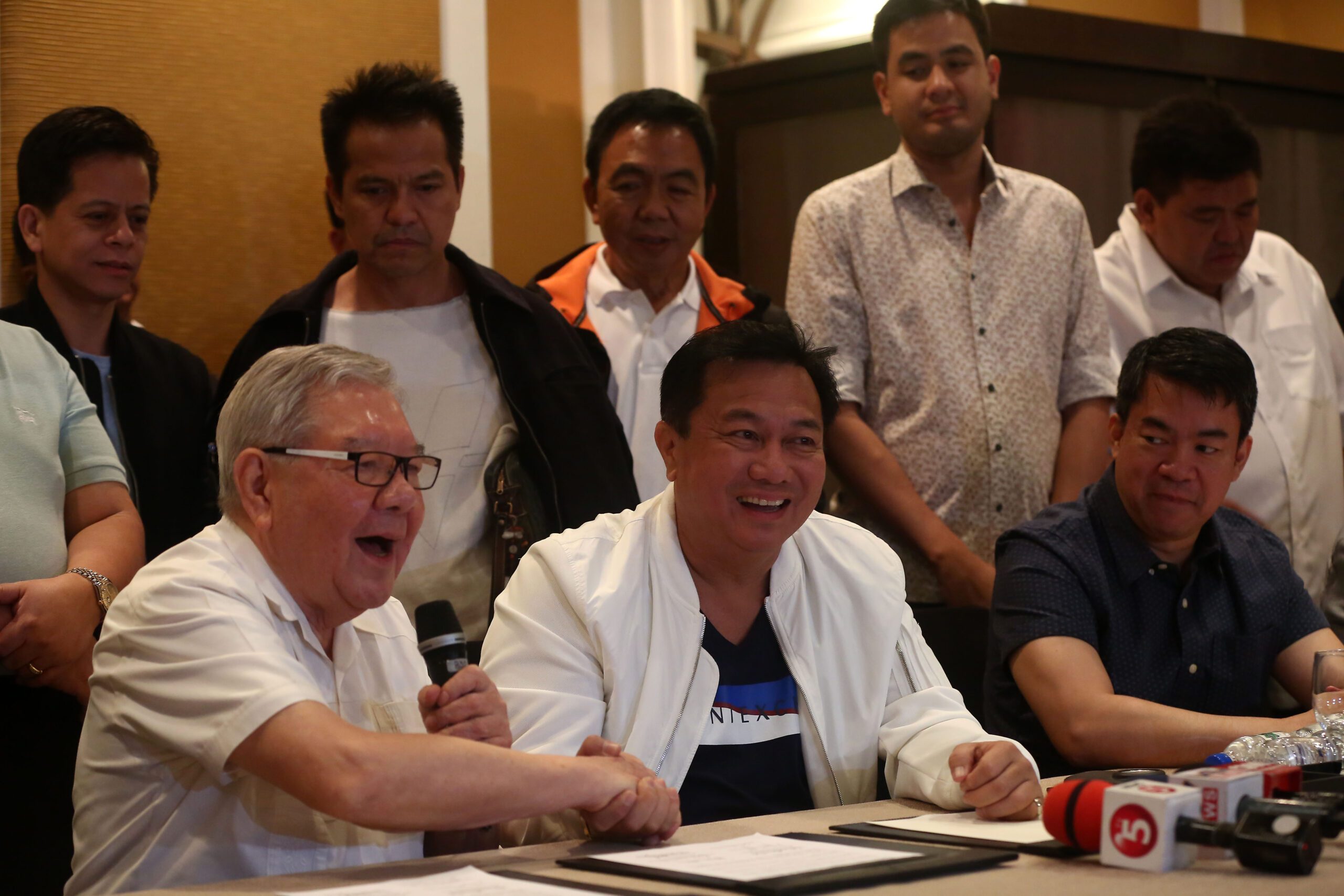SUMMARY
This is AI generated summarization, which may have errors. For context, always refer to the full article.

It was a decision-making process that stretched on for weeks and even months, until a final decision was reached days before President Rodrigo Duterte’s first State of the Nation Address: the Liberal Party (LP), which lorded over Philippine politics for 6 years, would be allying itself with the new majority led by PDP-Laban.
On Sunday, July 24, the former ruling party inked a deal with the now-ruling PDP-Laban to join what’s being called the “supermajority” in the House of Representatives.
The new majority counts PDP-Laban, the LP, the Nacionalista Party, and the Nationalist People’s Coalition, among others, as its members.
Why the majority
The road to the supermajority was not easy.
Even before the new administration formally came into power, the LP – or what was still left of it – met to deliberate their next move. The meeting at the House of Representatives extended onto Malacañang, where party chairman and then-president Benigno Aquino III himself saw the “strong clamor” for the party to remain in the majority.
It was a tricky situation: there were members who still wanted to remain in the LP but wanted to coalesce with the new ruling party. The reasons were simple, said outgoing House Speaker and LP vice chairman Feliciano Belmonte Jr: President Rodrigo Duterte’s “huge mandate” in the 2016 elections and the “usual hometown reasons.”
“Hometown reasons” include the notion that if a district representative is a member of the minority, projects for that district would not be prioritized.
Negotiations began after Duterte was officially proclaimed the winner of the elections but encountered a hiccup shortly after the first week of June, or after Belmonte paid a courtesy call on Duterte in Davao City.
Some members of the now ruling PDP-Laban wanted to place a “cap” on the number of LP members who would be allowed to join the ruling coalition. At that time, a little over 40 legislators were still officially LP members.
The “imposition” apparently miffed Belmonte and the rest of the ruling party, leading to a temporary “breakdown” in negotiations. Making things more complicated was the fact that several LP members were “hardliners” – they were already adamant in joining either the minority or majority, regardless of the party’s decision.
With days left before the first SONA on July 25, the LP finally decided to join the minority, with Belmonte gunning for the post of minority leader. But days later, the party would change their mind. Why?
‘Partly a failure’
The numbers didn’t lie. Even if most of the LP were in the minority, they figured nabbing the post of minority floor leader would still be a long shot. Some members of the minority (like in previous administrations), after all, are still loosely affiliated with the majority – a “constructive minority,” if you will.
Aquino, chairman of the LP, also reminded legislators of their discussion in the dying weeks of his presidency: to remain in the majority and help the new administration. The former president’s support helped seal the deal.
Aquino visibly took a softer stance on Duterte after the latter’s win – a strange sight considering Aquino went all out in hitting the Davao City mayor during the campaign season. His show of goodwill has also extended to a promise not to bash Duterte – at least during Duterte’s first year as president.
It was Belmonte who was tasked to lead efforts to make sure the LP – or at least most of its members – would find a spot in the majority. But as the negotiations progressed, more and more LP members jumped ship to become new members of PDP-Laban.
“As you can see, I am also partly a failure. Why? A lot of the people who were introduced here as PDP were in fact LPs at the time when the president told me to help everybody get in. Some people siguro mas apurado kaysa iba… nauna na ‘yung iba (Maybe some people were more eager so they went ahead). But still, this is a substantial group here,” said Belmonte, referring to the 20 or so LP members who showed up at the EDSA Shangri-La on Sunday.
Among the LP members who’ve since jumped ship include Ilocos Norte Representative Rudy Fariñas, who is set to be the next majority leader. Fariñas was also present during the Sunday meeting.
What’s next for the LP?
Now that the LP has finally decided to join the majority, what happens to its “hardliners” who want to join the minority? What happens to the party which constantly warned the electorate of a “Duterte dictatorship” under a PDP-Laban dominated Congress?
Belmonte expects those who’ve opted out of the majority coalition to eventually become “independents” in the minority.
As for their differences in the past, Belmonte had this to say: “An election is an election. An election is a place for a conflict of viewpoints, conflict of interest even and so forth. Pero (But) the election is over. It’s time for us to get together and move on as a people.”
The LP has yet to decide on its new leadership structure moving forward.
Formally, Aquino is still its chairman. 2016 standard-bearer Manuel Roxas II is still its president-on-leave while Belmonte and outgoing Senate President Franklin Drilon are still its vice chairmen.
Vice President Leni Robredo, who has the highest elective post in the party, is unlikely to take a “leadership role,” said Belmonte, since she plans to concentrate on her work as VP and her appointed post as Duterte’s housing czar.
Aquino, meanwhile, is taking a breather and has not played an active role in the party’s movements. – Rappler.com
Add a comment
How does this make you feel?
There are no comments yet. Add your comment to start the conversation.